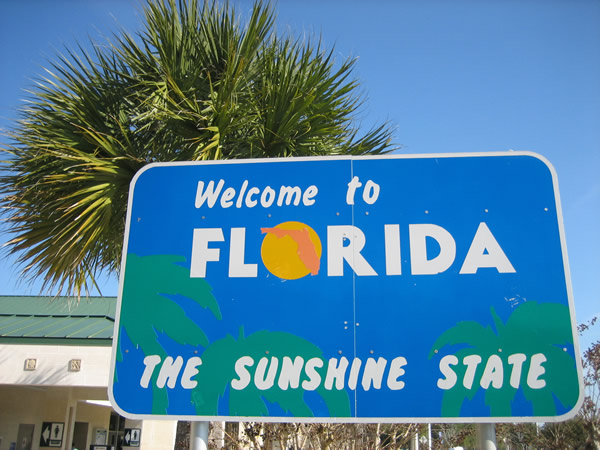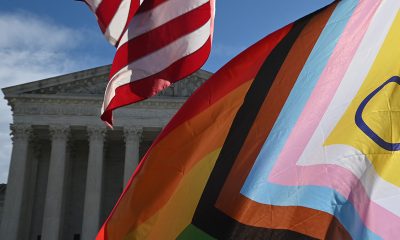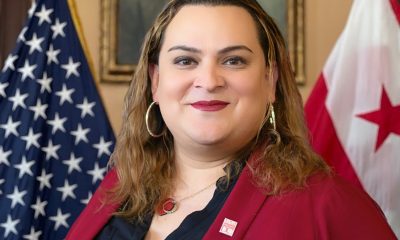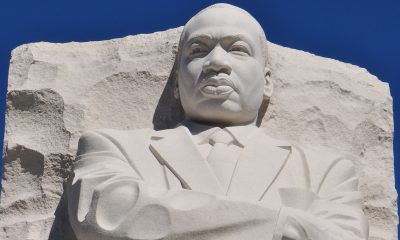a&e features
Pride, activist groups, the gay press and more take form in wake of Stonewall riots
Bumps and hurdles loomed in most areas as movement came of age in ‘70s and beyond
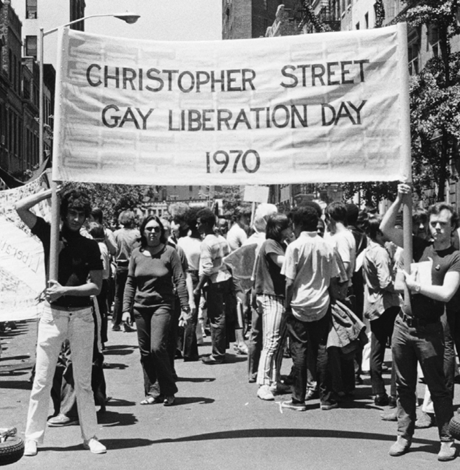
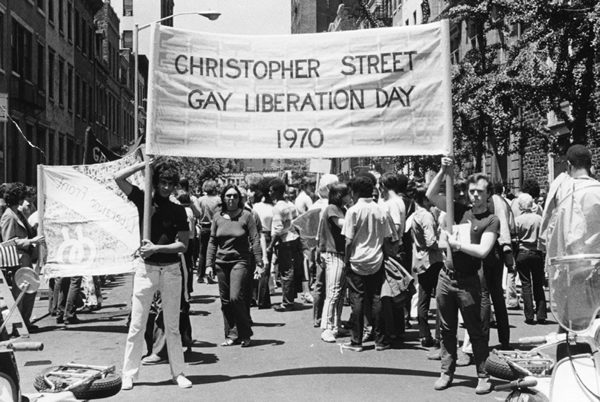
The most impactful legacy of Stonewall isn’t what happened those few nights, but what grew out of it — annual Pride celebrations, of course, but also the gay press, a proliferation of rights groups, de-classification of homosexuality as mental illness, disco, sexual lib, AIDS and more. Whole books have been written on each of these topics, for anyone interested in further study.
THE BIRTH OF PRIDE
Some of the people who rioted starting on June 28, 1969, once things settled, started to organize and a group called the Stonewall Veterans Association, which is still in existence, formed.
In November 1969, Craig Rodwell (1940-1993), owner of the Oscar Wilde Memorial Bookshop (the country’s first gay bookstore), along with his partner Fred Sargeant, Ellen Broidy and Linda Rhodes, proposed a New York City march to commemorate the riots. He introduced a resolution at the Eastern Regional Conference of Homophile Organization (ERCHO) in Philadelphia.
“We propose that a demonstration be held annually on the last Saturday in June in New York City to commemorate the 1969 spontaneous demonstrations on Christopher Street and this demonstration be called Christopher Street Liberation Day,” the resolution said. “No dress or age regulations shall be made for this demonstration.”
The concept of Pride being held in other cities simultaneously was ingrained in the concept from the outset.
“We also propose that we contact homophile organizations throughout the country and suggest that they hold parallel demonstrations on that day. We propose a nationwide show of support,” the resolution stated.
Christopher Street Liberation Day was held June 28, 1970, the first gay Pride march in the U.S. It covered 51 blocks to Central Park with a parade permit reluctantly delivered just two hours before the scheduled start time. Marches were simultaneously held in Los Angeles and Chicago. In 1971, it had spread to Boston, Dallas, Milwaukee and three European cities as well. Pride in Washington started in 1975.
Since 1984, the parade and related events in New York have been produced and organized by Heritage of Pride, a volunteer, non-partisan LGBT group.
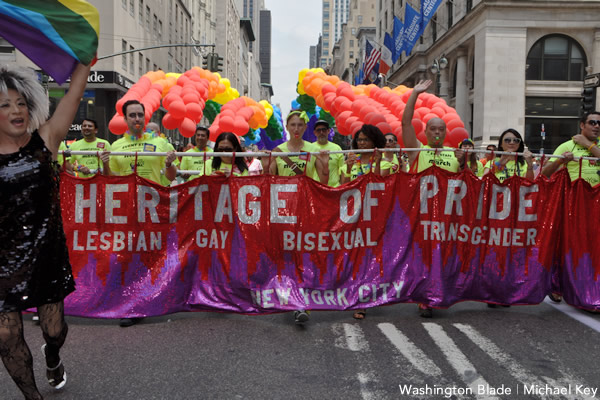
THE GAY PRESS
The gay press didn’t begin with Stonewall. The earliest known publication had an inauspicious start. In 1947, an underworked secretary trying to look busy, typed, stapled and distributed 12 copies of Vice Versa, which she dubbed “America’s gayest magazine.” Since then, thousands have followed in her steps producing about 2,600 — at their height — publications ranging from weekly newspapers to more radical tabloids to glossy monthly magazines.
Seminal pre-Stonewall publications included Ladder, Vector and the Los Angeles Advocate.
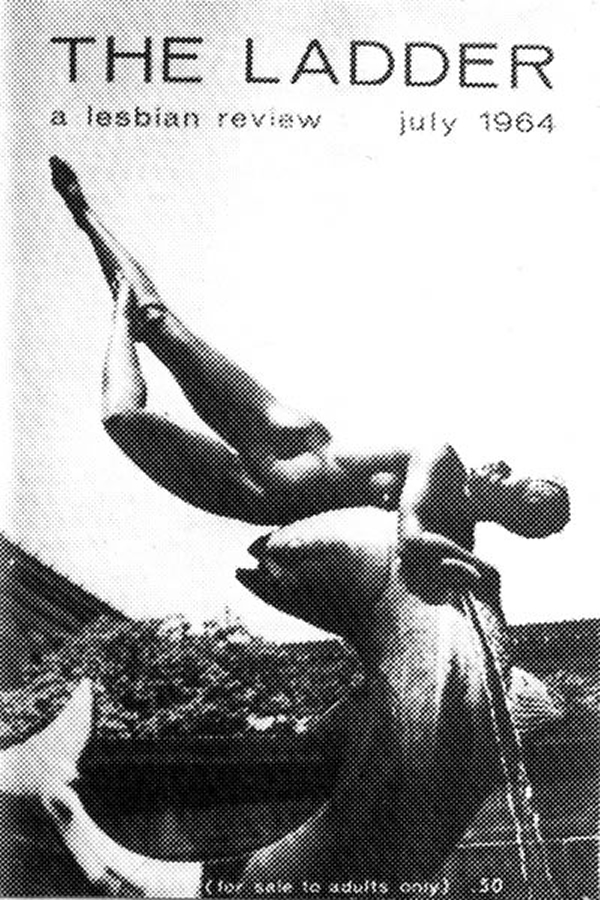
The number of these publications exploded after Stonewall. It was seen as necessary as even the most liberal alternative press of the day — in New York, The Village Voice, refused to print the word gay. “Throughout the ‘70s, people who depended solely on mainstream media for news would hardly have been aware of the gay rights movement,” writes author/historian Eric Marcus in his 2002 book “Making Gay History.” “With a few notable exceptions, the television networks, daily newspapers and newsmagazines gave little coverage to gay issues.”
“After the apocalyptic Stonewall impulse, the press erupted in so many directions that it is impossible to document when each publication was founded, how long it existed or who edited it,” writes Rodger Streitmatter, author of “Unspeakable: the Rise of the Gay and Lesbian Press in America.”
“Our Own Voices: A Directory of Lesbian and Gay Periodicals” listed 150 publications by 1972, Streitmatter writes.
One of the most influential was called simply GAY, started in December 1969 by gay press veterans (and partners) Jack Nichols and Lige Clarke, who’d covered Stonewall. It soon became, according to Streitmatter, the “newspaper of record for gay America.”
Veteran activist Lilli Vincenz, who wrote a lesbian column for GAY, is quoted in “Unspeakable” as having said, “It was the newspaper of the day. If you were gay and you wanted to find out what was going on in the world, you turned to GAY.”
It sold 20,000 copies of its first issue (at 40 cents per copy) and reached a monthly circulation of 25,000 by its second issue, figures that took the Advocate two years to build. Within six weeks, two other New York-based newspapers were launched — Come Out! and Gay Power. GAY continued until Clarke was murdered in 1975.
Streitmatter writes later in the book that the publications “that survived the aftershocks of Stonewall were those with a combination of calm voices and stable finances,” citing GAY in New York and The Advocate in Los Angeles as leaders.
But two months before GAY was launched, in October 1969, Vincenz and a small group of men and women met in the basement of a Connecticut Avenue building to work on the first issue of the Gay Blade. The monthly, mimeographed one-sheet issued by a volunteer staff contained three columns of news, community notices and a small advertisement for someone who wanted to sell a car, writes author Edward Alwood in his 1996 book “Straight News: Gays, Lesbians and the News Media.”
“By distributing copies at the city’s gay and lesbian bars, they quickly established the Blade as a source of valuable information that was not available from any other source,” Alwood writes.
Editor Nancy Tucker told Alwood they printed “things that we thought were important to the mental health and social welfare of other people like us,” Alwood quotes her as having said. “Periodically we ran warnings of blackmailers who hung around Dupont Circle or the gay bars. We wrote about rough cops. There were plenty of military and government workers who were undergoing some type of security investigation and all of those people needed to know about their rights. These were a heavy orientation for us.”
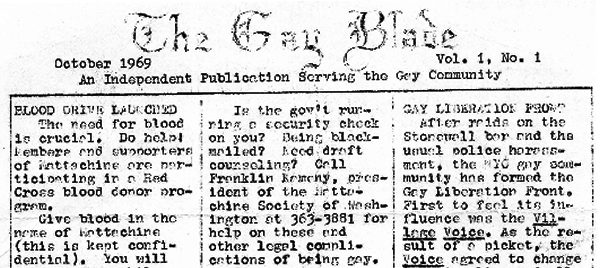
It was the first of a new generation of gay papers that included Gay Community News in Boston, NewsWest in Los Angeles, Gay News in Pittsburgh and GayLife in Chicago, Alwood writes.
“Unlike the early homophile press, which stressed identity and cooperation, this second generation concentrated almost solely on political change and resistance,” Alwood writes.
The Gay Blade was rechristened the Washington Blade in 1980 and went to weekly publication in 1983. It’s the oldest continually operating LGBT newspaper in the country. It celebrates its 50th anniversary in October.
REGIONAL GAY RIGHTS GROUPS
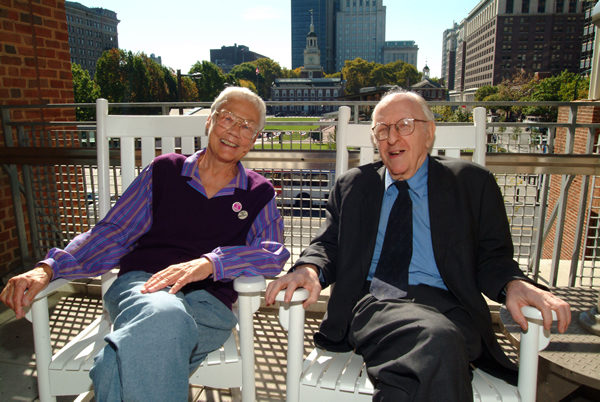
Although groups like the Mattachine Society and Daughters of Bilitis had been around since the ‘50s, things became more emboldened after Stonewall. The Gay Liberation Front was the first organization to use gay in its name. Previously, all “homophile” (as they were known) groups purposefully did not.
Legendary early activists Barbara Gittings and Kay Lahusen were vacationing on Fire Island when they heard about Stonewall. Upon returning to the city in September, they began attending meetings of the Gay Liberation Front and encountered a much different group of people and ethos.
“They were huge meetings, it was the best theater in town,” Lahusen is quoted as having said in “Making Gay History.” “This was the heyday of radical chic … and here I was this plain Jane dinosaur from the old gay movement.”
Gittings said there was zero acknowledgement of the pre-Stonewall efforts.
“Suddenly here were all these people with absolutely no track record in the movement who were telling us, in effect, not only what we should do but what we should think,” she’s quoted as having said in “Making Gay History.” “The arrogance of it was really what upset me.”
Gittings said she and Frank Kameny were even asked at one Philadelphia meeting who they were and what they were doing there.
“For once, I think even Frank was dumbfounded,” Gittings is quoted as having said. “As if we owed them an explanation.”
Gittings said right after Stonewall, the Gay Liberation Front and the Mattachine Society, which some perceived as having been slow to respond to the riots, were the only two active groups.
“Mattacine was so stuffy and its day was over,” Lahusen said in “Making Gay History.” “These organizations seem to have a built-in life expectancy.”
“Mattachine wasn’t up to managing the lively response to the Stonewall riots and GLF came in to fill the void,” Gittings told author Marcus.
The Gay Liberation Front (a name used by multiple groups over the years), however, disbanded after just four months when members were unable to agree on operating procedure. In December 1969, some people who had attended Front meetings but left frustrated formed Gay Activists Alliance (GAA), an “orderly” group to be focused entirely on gay issues. A D.C. chapter had formed by 1971. It became the Gay & Lesbian Activist Alliance in the ‘80s, and continues to this day.
Many of the main groups with major name recognition today started later. The National Gay Task Force (now the National LGBTQ Task Force) started in 1973. Two groups merged to form the largest, Human Rights Campaign, in the early ‘80s.
Many of the state groups came much later, uniting around the marriage issue. The California Alliance for Pride and Equality was founded in 1999 and only became Equality California in 2003. The now-dissolved Empire State Pride Agenda was founded in 1990 through a merger of two earlier groups. By 2005, it was the largest state lobbying group.
AIDS
In a roundabout way, Stonewall, in time, also brought attention to the disparate health care needs of LGBT people. That’s the contention of Perry N. Halkitis, dean of Rutgers School of Public Health and author of the new book “Out in Time: From Stonewall to Queer; How Gay Men Came of Age Across the Generations.”
“The riots allowed gay people to say ‘we exist’ and create a demand for health equity,” Halkitis said in a recent interview with tapinto.net. “The civil disobedience of Stonewall served as a catalyst to the activism of the AIDS era, which in turn has contributed to the foundations of how public health today emphasizes social justice and health equity.”
Although initially about wholly separate issues, Stonewall started a movement that was eventually “catapulted” 13 years later when HIV hit, he says.
“As the riots framed the basis for the recognition of gay people as viable members of the population, the AIDS crisis of the 1980s and ’90s created the circumstances by which they would come to demand that the government and society attend to their well-being,” Halkitis said in the tapinto.net interview. “Before then, gay people kept silent and were invisible to their doctors, who were unaware they were gay or did not understand the mental health and drug issues they were facing. The AIDS crisis shined a light on the fact that there was this population that needed specific health services beyond what was given to the general population.”
Dr. Demetre Daskalakis, deputy commissioner for the Division of Disease Control of the New York City Department of Health and Mental Hygiene, said in a New York Times interview last week that the histories of Stonewall and AIDS are inextricably linked and have affected what’s still happening today.
“It’s so critical that you had an uprising, and it became not just folks being downtrodden by their system but actually then fighting back,” Daskalakis told the Times. “I feel that the fighting spirit now is like the ACT UP experience in New York. There was a feeling that it was part of LGBTQ rights to ask for faster, better support and funding to fight HIV. … I think the legacy of activism remains powerful decades later.”
As the number of deaths soared, gay and lesbian people and gay rights organizations redirected their energies, Marcus writes in “Making Gay History.”
“Many thousands of gay people who had never participated in gay rights efforts were motivated to join the fight against AIDS,” he writes. “New organizations joined existing ones to provide care for the sick and dying, conduct AIDS education programs, lobby local and federal governments for increased funding for AIDS research, pressure medical researchers and drug companies to become more aggressive in their search for treatments and a cure and fight discrimination against people with AIDS and those infected with HIV.”
AMERICAN PSYCHIATRIC ASSOCIATION
In 1973, the American Psychiatric Association removed the diagnosis of “homosexuality” from the second edition of its Diagnostic and Statistical Manual.
In the mid-20th century, some homophile activist groups accepted psychiatry’s illness model as an alternative to societal condemnation of homosexuality’s supposed “immorality” and were willing to work with professionals who sought to “treat” or “cure” them, Jack Drescher writes in his 2015 study “Out of DSM: Depathologizing Homosexuality.” Other activists, however, forcefully rejected the pathological model as a major contributor to the stigma and in the wake of the Stonewall riots, brought modern sex research theories to the attention of the APA.
Believing psychiatric theories to be a major contributor to anti-gay social stigma, activists disrupted the 1970 and 1971 annual APA meetings.
Although, Drescher writes, there were rumblings happening within the world of psychiatry that helped the gay cause, “the most significant catalyst for diagnostic change was gay activism.”
Kameny and Gittings spoke on a 1971 APA panel entitled “Gay is Good.” They returned in ’72, joined by Dr. John Fryer, who appeared anonymously as a “homosexual psychiatrist.”

APA’s Nomenclature Committee eventually recommended removing homosexuality when it determined it unique among the supposed mental disorders in that in and of itself, it did not cause distress nor was it associated with generalized impairment in social effectiveness of functioning.
It wasn’t a completely cut-and-dried affair; the psychiatric world continued grappling with the controversial decision for years, Drescher writes in his scholarly article, but it was “the beginning of the end of organized medicine’s official participation in the social stigmatization of homosexuality.”
Many people, both inside and outside the psychology profession, claimed the APA had succumbed to pressure from gay activists and while it was true that many gay men and lesbians had exerted pressure, there were also respected psychiatrists within the organization who worked to affect the change, Marcus writes in “Making Gay History.” One was Dr. Judd Marmor, a Los Angeles psychiatrist.
“We didn’t merely remove homosexuals from the category of illness. We stated that there was no reason why a priori a gay man or woman could not be just as healthy, just as effective, just as law abiding and just as capable of functioning as any heterosexual,” Marmor is quoted as having said in Marcus’s book. “Furthermore, we asserted that laws that discriminated against them in housing or in employment were unjustified. So it was a total statement.”
Shortly thereafter, the American Psychological Association and the American Bar Association came out in support of gays.
“It was an important step that we took,” Marmor said in “Making Gay History.”
DISCO
Disco music, a type of dance music and the subculture around it that emerged in the ‘70s from the U.S. urban nightlife scene, is inextricably linked to post-Stonewall gay life.
Its “four-on-the-floor” beats, syncopated basslines and shimmery instrumentation flourished in venues popular with black, Latinx and gay nightlife lovers mostly in major cities on the East Coast at the dawn of the ‘70s. The most popular disco artists were Donna Summer, Gloria Gaynor, the Bee Gees, Chic, KC and the Sunshine Band, the Village People, Thelma Houston and others. Pop acts like Diana Ross and Michael Jackson, who’d had hits in other genres, jumped on the disco bandwagon with success.
In his essay “In Defense of Disco,” gay writer Richard Dyer writes that disco gave gay men a mainstream musical genre they could embrace.
“All my life, I’ve liked the wrong music,” he writes. “I never liked Elvis and rock ’n roll; I always preferred Rosemary Clooney. And since I became a socialist, I’ve often felt virtually terrorized by the prestige of rock and folk on the left. … Disco is more than just a form of music, although certainly music is at the heart of it. Disco is also kinds of dancing, club, fashion, film — in a word, a certain sensibility.”
Thematically, Dyer (whose essay is included in the 1995 anthology “Out in Culture: Gay, Lesbian and Queer Essays on Popular Culture”), writes that disco has both rhythmic and lyrical appeal to gay men.
“No wonder (Diana) Ross is (was?) so important in gay male scene culture for she both reflects what that culture takes to be an inevitable reality — that relationships don’t last — and at the same time celebrates it, validates it.”
“Our music owes so much to the gay clubs that first nurtured it, which in turn helped to create safe spaces that allowed a marginalized population the freedom to be themselves,” writes Ned Shepard in a 2016 Cuepoint essay.
He cites a comment from Barry Walters from Billboard.
“The history of dance music in America and the history of LGBT folks — particularly those of color — coming together to create a cultural utopia was and still is inseparable. Neither would have happened without the other,” Walters is quoted as having said.
SEXUAL LIBERATION
Sexual liberation in the pre-AIDS era for lesbian and gay activists was a heated topic. Gay men especially enjoyed dabbling liberally without any of the baggage sexually adventurous women — despite this being the era of Helen Gurley Brown and her landmark 1962 book “Sex and the Single Girl” — faced, but the concern that gay rights would be overly associated with a free sex narrative was contentious and variations of that argument continue to this day.
The 1980 William Friedkin (“The Exorcist”)-directed movie “Cruising” was a nadir of the conundrum.
“There was … a political and ideological split in the gay community about whether or not it was valuable or necessary to show the leather and sadomasochism aspect of the community on screen,” recalls “The Celluloid Closet” author Vito Russo in “Making Gay History.” “There were middle-of-the-road gays who found this kind of thing horrifying. Just because you’re gay doesn’t mean you were necessarily acquainted with the more far-out aspects of gay sexuality, especially in the 1970s. There were a lot of gay men, and certainly lesbians, in this country who would have been deeply shocked by the sex bars in New York. … Suddenly the issue became, ‘Do we want to present this to the world as the way gay people are?’ The public was not going to distinguish between one group of gay people and another.”
Nancy Walker (not the “Rhoda” actress) writes of her volunteer work in the early ‘70s at the Boston-based weekly Gay Community News in “Making Gay History.”
“We wanted gay liberation but what did that mean,” she writes. “Did it mean equal rights? To me, that’s all I ever wanted. On the other hand, some of them wanted to be able to fuck in the parks. Well, that’s wonderful, but if they did, I wouldn’t take my children there either. How far is sexual freedom supposed to go? Are you allowed to have intercourse on the street corner because you feel like doing it? How does that make you different from a dog? What happens to civilization when people lose all their socialization and have sex, where and with whom they please? We have to have a little bit of self control, a little discipline. I’m sorry, but I’m not interested in sexual freedom. I’m interested in being able to live.”
Ultimately things somewhat self calibrated — AIDS brought a day of reckoning writ large, it didn’t manage to kill off gay bathhouse culture and, of course, antiretroviral meds and PrEP were game changers in the AIDS war. But it’s not all gay “Pollyanna.” Entrapment of cruising gay men remains a problem. As recently as 2015 in Rehoboth Beach, Del., of all places, 12 men were arrested for public lewdness by undercover police officers.
a&e features
Visible and unapologetic: MAL brings the kink this weekend
Busy lineup includes dances, pups, super heroes, and more
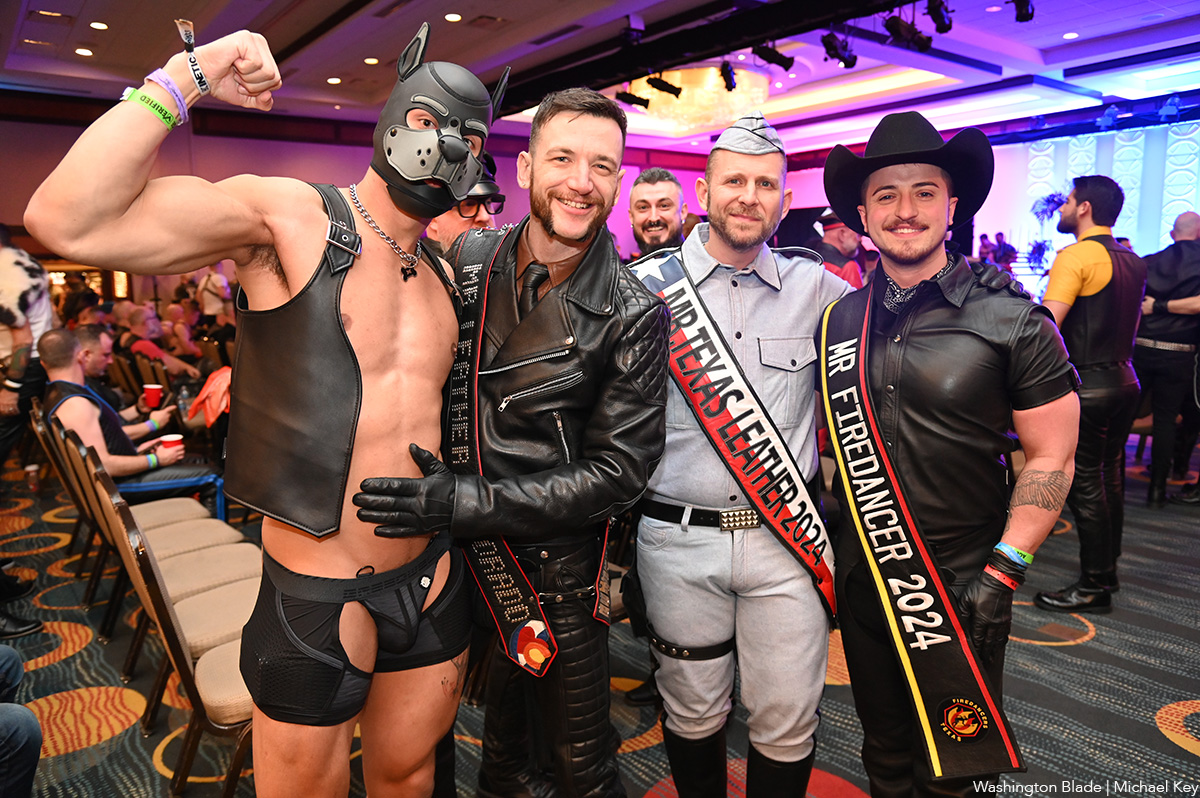
MLK Weekend in D.C. brings the annual Mid-Atlantic Leather (MAL) Weekend. Just a short walk from where Congress has been attacking queer Americans this year, MAL takes place at the Hyatt Regency Washington for several days of intrigue, excitement, leather, and kink.
The Centaur Motorcycle Club — one of several similar groups dedicated to leather in the country — has been hosting MAL in its current form for more than 40 years. Originally a small gathering of like-minded people interested in the leather lifestyle, MAL has grown to include a full four days of events, taking place onsite at the Hyatt Regency Washington (400 New Jersey Ave., N.W.). Select partner happenings take place each night, and many more non-affiliated events are scattered across the DMV in honor of and inspired by MAL.
MAL Weekend has become an internationally renowned event that celebrates fetish culture, yet it also raises funds for LGBTQ organizations, “reinforcing its legacy as both a cultural and philanthropic cornerstone of the global leather community,” according to MAL organizers.
During the day, MAL events at the Hyatt include workshops, social gatherings, shopping, and other in-person engagements for the community.
“The Hyatt underwent an extensive top to bottom renovation after last year’s event,” says Jeffrey LeGrand-Douglass, the event chair. The lobby, meeting spaces, guest rooms, and other areas have been updated, he notes, “so I am very excited for our guests to experience the new design and layout for the first time. And of course as with every year, we look forward to the contest on Sunday afternoon and seeing who will become our new Mr. MAL.”
In the evening, MAL hands the reins to partner KINETIC Presents, the D.C.-based nightlife production company. KINETIC will host four consecutive nights of high-production events that fuse cutting-edge music, immersive environments, and performance. This year, KINETIC is popping open doors to new-to-MAL venues, international collabs, play zones, and a diverse lineup.
According to KINETIC managing partner Zach Renovátes, 2026 is the most extensive MAL production to date. “The talent lineup is unreal: an all-star roster of international DJs, plus drag superstar performances at the Saturday main event,” he says.
Renovátes added that he’s “most excited about the collaborations happening all weekend — from bringing in MACHO from WE Party Madrid, to teaming up with local leather groups, to nonprofit partners, and Masc Diva [a queer nightlife collective].”
Official MAL events begin on Thursday with the Full Package/Three Day Pass Pick-Up from 5:30-8:30 p.m. at the Hyatt.
Thursday night is also the KINETIC kickoff party, called LUST. Running 10 p.m. – 3 a.m., it’s being held at District Eagle. DJ Jay Garcia holds it down on the first floor, while DJ Mitch Ferrino spins in the expansive upstairs. LUST features special performances from the performers including Serg Shepard, Arrow, Chase, and Masterpiece.
Renovátes notes that the LUST opening party at District Eagle coincides with the bar’s grand re-opening weekend. The bar will unveil its new permanent home on the renovated second floor. “it felt like the perfect place to start Mid-Atlantic Leather weekend — right in D.C.’s only dedicated home for kink communities,” he says.
After Thursday night, Friday is when daytime events begin at the Hyatt. The Exhibit Hall, on the ballroom level below the lobby, hosts upwards of 30 vendors, exhibitors, and booths with leather goods, fetish wear, clothes, toys, other accessories, providing hours of time to shop and connect with attendees and business owners. The Exhibit Hall will be open on Friday from 4-10 p.m., as well as on Saturday and Sunday afternoons.
DC Health is once again back at MAL, to provide preventative health services. In the past, DC Health has provided MPox vaccines, Doxy PEP, HIV testing, Narcan kits, and fentanyl test strips. This booth will be open on Friday 4-10 p.m.
Later, at 6 p.m., the Centaur MC is holding its welcome reception on the ballroom floor. After the Centaur’s Welcome Reception, the MIR Rubber Social is 8-11 p.m. A Recovery Meeting is scheduled at 10 p.m.
Many attendees enjoy visiting the guest room levels of the hotel. Note that to get in an elevator up to a hotel room, a staff member will check for a hotel room wristband. Non-registered guests can only access host hotel rooms if they are escorted by a registered guest with a valid wristband. Registered guests are permitted to escort only one non-registered guest at a time. Non-registered guests with a wristband who are already in the hotel before 10 p.m. may remain until midnight. However, non-registered guests without a wristband will not be admitted after registration closes.
Friday night, for the first time, KINETIC Presents is joining forces with WE Party to bring MACHO to Washington, D.C. This official MAL Friday event delivers two stages and two genres. On the UNCUT XXL stage, international Brazilian circuit superstars Erik Vilar and Anne Louise bring their signature high-energy sound. On the MACHO stage, Madrid’s Charly is joined by Chicago’s tech-house force, Karsten Sollors, for a blend of techno and tech house. UNCUT also features the XL Play Zone, a massive, immersive space exclusive to this event. The party takes place at the Berhta space from 10 p.m.-4 a.m..
“This year we’re bringing back the two-room format we debuted at WorldPride for both Friday and Saturday, so attendees can really tailor their experience — whether they’re in the mood for circuit or tech house.” says Renovátes.
Directly after Friday’s UNCUT XXL, UNDERWORLD Afters takes over District Eagle, from 3:30-8 a.m. International DJ Eliad Cohen commands the music.
Saturday, the Exhibit Hall opens earlier, at 11 a.m.. DC Health will also be back from 11 a.m. to 6 p.m.
Saturday is also time for one of the most anticipated events, the Puppy Mosh, running from 11 a.m. to 1 p.m. During the event, pup culture comes to life, when pups, handlers, and friends can enjoy an inclusive, safe pup zone. There is also a Recovery Meeting at 11 a.m., and the IML Judges Announcement takes place at noon.
The popular Super Hero Meet Up will be held 1:30 p.m. – 3 p.m., sponsored by One Magical Weekend, for cosplayers, comic enthusiasts, and their friends.
From 2-6 p.m., the Onyx Fashion Show will take place to showcase and highlight people of color in leather.
Finally, the Leather Cocktail Party – the original event of MAL – will be held 7-9 p.m. in the Ballroom. While this requires special tickets to attend, at 9 p.m. is the MAL cocktail party, which is open to wider attendees.
The last event of Saturday leaves the hotel, again a partnership with KINETIC. Kicking off at 10 p.m. and running until 4 a.m., it’s just the second time that KINETIC’s Saturday night party is an official MAL event and serves as the main weekend engagement.
Saturday night’s centerpiece is called KINK: Double Trouble. The night will feature a first-ever back-to-back set from international electronic music icons Nina Flowers and Alex Acosta on the Circuit/Tribal Stage. The other room – the Tech House Stage – curated by The Carry Nation and Rose, provides a darker, underground counterpoint, reinforcing the event’s musical depth and edge.
Beyond the DJs, KINETIC has called in the big shots for this party: “RuPaul’s Drag Race” legends Nymphia Wind and Plastique Tiara are set to headline. The party also takes place at Berhta.
Sunday, back at the hotel, there will be another Recovery Meeting at 10 a.m., and the Exhibit Hall opens again from 11 a.m.-5 p.m.
At 1 p.m., the anticipated and prestigious Mr. MAL Contest that celebrates the achievements of the leather community will be held in the Ballroom. This highly sought after title gives one man the power to become the Mid-Atlantic Leather man of the year. Sash and title winners must be (1) male, (2), a resident of North America, (3) At least 21 years of age; and (4) self-identify as gay. The first Mr. MAL was crowned in 1985. The Winner of Mr. MAL has the privilege of later competing in International Mr. Leather (IML) in Chicago on Memorial Day Weekend 2025.
From 4 p.m. to 12 a.m., MAL will hold its Game Night for the gaymers in attendance. There will also be a special screening of A24’s new film, “Pillion,” about a man who is swept off his feet when an enigmatic, impossibly handsome biker takes him on as his submissive.
Sunday closes with a community partner event produced by Masc Diva, featuring Horse Meat Disco with support from Coach Chris, at A.I. Warehouse in the Union Market district. It’s the same team that produced HMD during WorldPride at A.I. Warehouse.
Note that there are several types of passes for attendance to the hotel and parties. KINK VIP Weekend Passes include express entry, VIP areas, and enhanced amenities throughout the weekend, while MAL Full Weekend Package holders receive access to the official Sunday closing event.
At last year’s MAL events, KINETIC Presents raised more $150,000 for LGBTQ charities, and expects to match or exceed that impact in 2026.
Renovátes stated that “now more than ever, it’s important to create safe, affirming spaces for our community — but it’s just as important to be visible and unapologetic. We want to make it clear that the LGBTQ+ and leather communities aren’t going anywhere. We’ve fought too long and too hard to ever feel like we have to shrink ourselves again, no matter what the political climate looks like.”
In addition to the KINETIC events, various LGBTQ bars will hold parties celebrating the theme of the weekend. For example, Kiki, located on U Street NW, is hosting a party called KINKI, hosted by DJ Dez, on Saturday night. Sister bar Shakiki, on 9th Street NW, is hosting a party called Railed Out, a fetish-inspired party that features a play zone, on Thursday night. Flash, on U Street NW, will hold its infamous Flashy Sunday party to close out the weekend.
a&e features
Queer highlights of the 2026 Critics Choice Awards: Aunt Gladys, that ‘Heated Rivalry’ shoutout and more
Amy Madigan’s win in the supporting actress category puts her in serious contention to win the Oscar for ‘Weapons’

From Chelsea Handler shouting out Heated Rivalry in her opening monologue to Amy Madigan proving that horror performances can (and should) be taken seriously, the Critics Choice Awards provided plenty of iconic moments for queer movie fans to celebrate on the long road to Oscar night.
Handler kicked off the ceremony by recapping the biggest moments in pop culture last year, from Wicked: For Good to Sinners. She also made room to joke about the surprise hit TV sensation on everyone’s minds: “Shoutout to Heated Rivalry. Everyone loves it! Gay men love it, women love it, straight men who say they aren’t gay but work out at Equinox love it!”
The back-to-back wins for Jacob Elordi in Frankenstein and Amy Madigan in Weapons are notable, given the horror bias that awards voters typically have. Aunt Gladys instantly became a pop culture phenomenon within the LGBTQ+ community when Zach Cregger’s hit horror comedy released in August, but the thought that Madigan could be a serious awards contender for such a fun, out-there performance seemed improbable to most months ago. Now, considering the sheer amount of critics’ attention she’s received over the past month, there’s no denying she’s in the running for the Oscar.
“I really wasn’t expecting all of this because I thought people would like the movie, and I thought people would dig Gladys, but you love Gladys! I mean, it’s crazy,” Madigan said during her acceptance speech. “I get [sent] makeup tutorials and paintings. I even got one weird thing about how she’s a sex icon also, which I didn’t go too deep into that one.”
Over on the TV side, Rhea Seehorn won in the incredibly competitive best actress in a drama series category for her acclaimed performance as Carol in Pluribus, beating out the likes of Emmy winner Britt Lower for Severance, Carrie Coon for The White Lotus, and Bella Ramsey for The Last of Us. Pluribus, which was created by Breaking Bad’s showrunner Vince Gilligan, has been celebrated by audiences for its rich exploration of queer trauma and conversion therapy.
Jean Smart was Hack’s only win of the night, as Hannah Einbinder couldn’t repeat her Emmy victory in the supporting actress in a comedy series category against Janelle James, who nabbed a trophy for Abbott Elementary. Hacks lost the best comedy series award to The Studio, as it did at the Emmys in September. And in the limited series category, Erin Doherty repeated her Emmy success in supporting actress, joining in yet another Adolescence awards sweep.
As Oscar fans speculate on what these Critics Choice wins mean for future ceremonies, we have next week’s Golden Globes ceremony to look forward to on Jan. 11.
a&e features
Looking back at the 10 biggest A&E stories of 2025
‘Wicked,’ Lady Gaga’s new era, ‘Sexy’ Bailey and more

Although 2025 was a year marked by countless attacks on trans rights and political setbacks, the year also saw brilliant queer artists continuing to create art. From Cannes and Sundance Award winners now vying for Oscar consideration to pop icons entering new stages of their careers, queer people persevered to tell their stories through different media.
With the state of the world so uncertain, perhaps there’s no more vital time to celebrate our wins, as seen through some of this year’s top pop culture moments. While there’s no collection of 10 stories that fully encompass “the most important” news, here are some events that got the gays going:
10. ‘Mysterious Gaze of the Flamingo’ wins big at Cannes

The Cannes Film Festival has become a crucial start for films hoping to make their way to the Oscars, and first-time director Diego Céspedes won the top Un Certain Regard prize for his intimate western “The Mysterious Gaze of the Flamingo.” The film is set in the ‘80s and is intended as an allegory for the AIDS epidemic. Seeing a film that unpacks vital queer history win one of the most coveted awards at Cannes has been a huge point of pride in the independent filmmaking community.
Since the film bowed at Cannes, it has been selected as Chile’s Oscar entry in the Best International Feature race. Speaking with The Blade during the film’s AFI Fest run in October, Céspedes said: At first, I was kind of scared to have this campaign position in the times that we’re living [in] here. But at the same time, I think the Oscars mean a huge platform — a huge platform for art and politics.”
9. ‘The Last of Us’ returns for an even gayer season 2
While the first season of The Last of Us gave us one of TV’s most heartbreaking queer love stories in the episode “Long, Long Time,” Season 2 doubled down on its commitment to queer storytelling with the blossoming relationship between Ellie (Bella Ramsey) and Dina (Isabela Merced). The show expanded on the pair’s relationship in the original video game, making it perhaps the central dynamic to the entire season. That unfortunately came with more homophobic backlash on the internet, but those who checked out all the episodes saw a tender relationship form amid the show’s post-apocalyptic, often violent backdrop. For their performance, Ramsey was once again nominated for an Emmy, but Merced deserved just as much awards attention.
8. ‘Emilia Pérez’ sparks controversy
Jacques Audiard’s genre-bending trans musical “Emilia Pérez” proved to be an awards season juggernaut this time last year, winning the Golden Globe for Best Musical/Comedy. But when the lead star Karla Sofia Gascón’s racist, sexist, and homophobic old tweets resurfaced, the film’s Oscar campaign became a tough sell, especially after Netflix had tried so hard to sell Emilia Pérez as the “progressive” film to vote for. Mind you, the film had already received significant backlash from LGBTQ+ audiences and the Mexican community for its stereotypical and reductive portrayals, but the Gascón controversy made what was originally just social media backlash impossible to ignore. The only person who seemed to come out of the whole debacle unscathed was Zoe Saldaña, who won the Oscar for Best Supporting Actress over Ariana Grande.
7. ‘Sorry, Baby’ establishes Eva Victor as major talent
Back in January at the Sundance Film Festival, Eva Victor (known by many for her brand of sketch comedy) premiered their directorial debut “Sorry, Baby” to rave reviews, even winning the Waldo Salt Screening Award. Victor shadowed Jane Schoenbrun on the set of “I Saw the TV Glow,” and seeing Victor come into their own and establish such a strong voice immediately made them one of independent cinema’s most exciting new voices. A memorable scene in the film sees the main character, Agnes (played by Victor), struggling to check a box for male or female, just one example of how naturally queerness is woven into the fabric of the story.
Most recently, Victor was nominated for a Golden Globe for her performance in the film, and she’s represented in a category alongside Jennifer Lawrence (“Die My Love”), Jessie Buckley (“Hamnet”), Julia Roberts (“After the Hunt”), Renate Reinsve (“Sentimental Value”) and Tessa Thompson (“Hedda”). The film also received four Independent Spirit Award nominations overall.
6. Paul Reubens comes out in posthumous doc

While Paul Reubens never publicly came out as gay before passing away in 2023, the two-part documentary “Pee-wee as Himself” premiered back in May on HBO Max, giving the legendary comedian a chance to posthumously open up to the world. Directed by Matt Wolf, the documentary explores how Reubens found his alter ego Pee-Wee Herman and why he kept his private life private.
The documentary won an Emmy in the Outstanding Documentary or Nonfiction Special category and remains one of the most critically acclaimed titles of the year with a 100% Rotten Tomatoes score. Also worth noting, the National Geographic documentary Sally told the posthumous coming out story of Sally Ride through the help of her long-time partner, Tam O’Shaughnessy.
5. Lady Gaga releases ‘Mayhem’
Lady Gaga entered a new phase of her musical career with the release of Mayhem, her seventh album to date. From the frenzy-inducing pop hit Abracadabra to the memorable Bruno Mars duet featured on “Die With a Smile,” seeing Gaga return to her roots and make an album for the most die-hard of fans was especially rewarding after the underwhelming film releases of “House of Gucci” and “Joker: Folie à Deux.” Gaga has been touring with The Mayhem Ball since July, her first arena tour since 2018. She even extended her tour into 2026 with more North American dates, so the party isn’t stopping anytime soon. And Gaga is even set to make an appearance next May in “The Devil Wears Prada 2.”
4. Cynthia Erivo, Ariana Grande perform at the Oscars

While “Wicked: For Good” didn’t quite reach the heights of the first film, we will forever have Cynthia Erivo and Ariana Grande’s breathtaking live performance that opened the 97th Academy Awards. The pair sang a rendition of “Over the Rainbow,” “Home,” and “Defying Gravity,” paying proper homage to the original 1939 “Wizard of Oz.” Even non-Wicked fans can’t deny how magical and brilliantly staged this performance was. With both Erivo and Grande up for acting Oscars last year, they’re hoping to repeat success and make history with consecutive nominations. Either way, let’s hope there’s another live performance in the making, especially with two new original songs (The Girl in the Bubble and No Place Like Home) in the mix.
3. Indya Moore speaks out against Ryan Murphy
Indya Moore has consistently used social media as a platform for activism, and in September, posted a 30-minute Instagram live speaking out against “Pose” co-creator Ryan Murphy. Moore claimed that Murphy wasn’t being a true activist for trans people. “Ryan Murphy, we need you to do more. You need to address the racism, the violence, and the targeting of people on your productions, Ryan Murphy. You do need to make sure trans people are paid equally. Yes, Janet did the right thing,” Moore said. Murphy was also back in the headlines this year for the critically panned “All’s Fair” and the controversial “Monster: The Ed Gein Story” starring Laurie Metcalf and Charlie Hunnam.
2. Cole Escola wins Tony for Best Leading Actor
Few pop culture moments this year brought us together more than Cole Escola winning a Tony award for “Oh, Mary!” the Broadway show they created, wrote and starred in (we love a triple threat!) Escola made history by becoming the first nonbinary person to win a Tony in the leading actor category, and seeing them excitedly rush to the stage wearing a Bernadette Peters-inspired gown instantly became a viral social media moment.
The cherry on top of Escola’s major moment is the recent news that they are writing a Miss Piggy movie with Jennifer Lawrence and Emma Stone producing — news that also broke the internet for the better. We cannot wait!
1. Jonathan Bailey makes gay history as ‘Sexiest Man Alive’

The same year as his on-screen roles in blockbusters “Jurassic World Rebirth” and “Wicked: For Good,” Jonathan Bailey made history as the first openly gay man to be named People magazine’s “Sexiest Man Alive.” The fact that it took 40 years for an openly gay man to earn the title is a signifier of how far we still have to go with queer representation, and seeing Bailey celebrated is just one small step in the right direction.
“There’s so many people that want to do brilliant stuff who feel like they can’t,” he told PEOPLE, “and I know the LGBT sector is under immense threat at the moment. So it’s been amazing to meet people who have the expertise and see potential that I could have only dreamed of.” In 2024, Bailey founded the charity titled The Shameless Fund, which raises money for LGBTQ+ organizations.

